Day 1 :
Keynote Forum
Timothy Sands
Naval Postgraduate School, USA
Keynote: Secured SatCom - Command and control communications
Time : 10:00 - 10:30
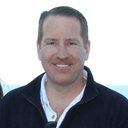
Biography:
Timothy Sands completed his PhD at the Naval Postgraduate School and postdoctoral studies at Stanford University and Columbia University, and is currently Associate Dean of the Naval Postgraduate School’s engineering school. He is an International Scholar Laurette of the Golden Key International Honour Society, a Fellow of the Defense Advanced Research Projects Agency (DARPA), and panellist of both the National Science Foundation (NSF) Graduate Research Fellowship program and the National Defense Science and Engineering Graduate (NDSEG) Fellowship. He has published prolifically, and given several plenary, keynote and invitational presentations. He holds one patent in spacecraft attitude control.
Abstract:
To Maintain secured communications signal connectivity, spacecraft must maintain orientation. Two objectives dominate consideration of control moment gyroscopes (CMGs) for maintenance of orientation: High torque (or equivalently momentum) and singularity-free operations. Utilizing a 3/4 CMG skewed-pyramid the optimal singularity-free configuration is revealed. Next, this presentation develops a decoupled control strategy to reduce the remaining singular conditions. Analysis and simulation is provided to justify the argument with experimental verification performed on a free-floating satellite simulator. Furthermore, a singularity penetration algorithm is developed, simulated, and experimentally proven to fly through singularities even without singularity reduction.
Keynote Forum
Richard Mihalik
Deputy Director Nuclear Operations, U.S. Air Force, USA
Keynote: Nuclear Command and Control Communications

Biography:
Richard Mihalik is Deputy Director Nuclear Operations in U.S. Air Force, USA. Eurosatcomm 2019 was thankful for his support in various forms, he is the moderator and chair for day 01 session at eurosatcomm-2019, Amsterdam, Netherlands
Abstract:
- Expedition Four to the International Space Station
Location: Holiday Inn Express Amsterdam – Arena Towers.
Session Introduction
Daniel Bursch
Former NASA astronaut, Chair Professor, Naval Postgraduate School, USA
Title: Expedition Four to the International Space Station
Time : 11:30-12:15
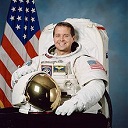
Biography:
Daniel Wheeler Bursch (born July 25, 1957) is a former NASA astronaut, and Captain of the United States Navy. He had four spaceflights, the first three of which were Space Shuttle missions lasting 10 to 11 days each. His fourth and final spaceflight was a long-duration stay aboard the International Space Station as a crew member of Expedition 4, which lasted from December 2001 to June 2002. This 196-day mission set a new record for the longest duration spaceflight for an American astronaut, a record simultaneously set with his crew mate Carl Walz.Their record has since been broken, and as of 2016 it is held by Scott Kelly, who flew a 340-day mission during Expeditions 43, 44 and 45. Awarded the Defense Superior Service Medal, NASA Space Flight Medals, the Navy Commendation Medal and the Navy Achievement Medal. Distinguished graduate, U.S. Naval Academy and U.S. Naval Test Pilot School.
Abstract:
Dan Bursch will present pictures and share stories of his experience of spending 6.5 months off the planet as a member of the Expedition Four crew to the International Space Station from December 2001 to June 2002.
Matthew Crook
Lecturer, Naval Postgraduate School Space Systems Academic Group | USA
Title: SATCOM Past, Present and Future
Time : 12:15-12:45
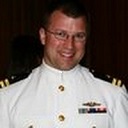
Biography:
Mathew Crook is working with Naval postgraduate school Space Systems Academic Group in USA
Abstract:
SATCOM Past, Present and Future
Alex Bordetsky
Professor, Graduate School of Operational and Informational Sciences, USA
Title: Mesh Networking
Time : 12:45-13:15
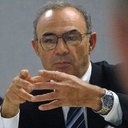
Biography:
Alex Bordetsky is tenured Professor of Information Sciences at the Naval Postgraduate School. He also holds dual appointment with the Space Systems Academic Group at NPS. Professor Bordetsky is Director of the NPS Center for Network Innovation and Experimentation (CENETIX). He is a recipient of prestigious Robert W. Hamming Interdisciplinary Research Award for the pioneering studies of collaborative technologies and adaptive networking and the Fulbright Senior Fellowship Award for the experimental studies of unconventional maritime networking. Dr. Bordetsky is the Principal Investigator for the renowned TNT MIO Military-Academic Experimentation Campaign, which is now in transformation to Littoral and Maritime-Land CWMD operations study. His research accomplishments are featured in the AFCEA SIGNAL Magazine, Via Sat, USSOCOM Tip of the Spear Journal, Pentagon Channel, and Fulbright Newsletter.Dr. Bordetsky publishes in major IS journals including Information Systems Research, Telecommunication Systems Modeling and Analysis, International Journal of Mobile Wireless Communications, and International Command and Control Research Journal.
Abstract:
We discuss the NC3 Networking Experimentation Modules for studying Trans/Post Resilient Mesh Networking solutions They represent a set of hands-on field experiments focused on integration and operation of Trans/Post Resilient Mesh Networks( TP-RES MESH). The TP-RES MESH will utilize maritime-land self-forming mesh networking enclaves, R/N sensors, cubesats, rapidly deployed stratospheric aerial nodes , and links to partner agency/nation assets. Geographically, the experimentation area will span from places like Offutt, Barksdale, or Hanscom, to the assisting sites in SF Bay and Camp Roberts. The series of TP-RES MESH experiments, conducted by students quarterly, will serve as field laboratories to support the TR-RES MESH NOC class and related NC3 certificate studies
Derek Hall
Department of Mechanical and Aerospace Engineering | USA
Title: Nuclear Command and Control using Quantum Key Distribution for Encrypted Communication
Time : 14:00-14:30
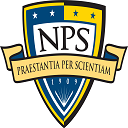
Biography:
Major Derek Hall is a graduate of the University Wisconsin Whitewater and commissioned through ROTC as a Communications Officer. Shortly after commissioning, he was selected for undergraduate navigator training and he graduated as an Electronic Warfare Officer. He was assigned to the RC-135 at Offutt AFB, where he deployed 15 times for over 700 days to locations worldwide. During that time, he rose to Evaluator Mission Commander and attained a Mater's of Engineering degree from the University Nebraska Lincoln. Currently he is working on his Engineering Doctorate with an emphasis in Nuclear Weapons Effects Policy and Proliferation through Naval Postgraduate School.
Abstract:
Quantum key distribution (QKD) has the potential to provide nearly impregnable secure transmissions, increased bandwidth, and additional redundancy for nuclear command and control communication (NC3). While QKD is still in its adolescence, the manner in which QKD should be used for NC3 must be charted out before it can be engineered, tested, and implemented for operations. This presentation will describe how QKD works, its pros and cons, and theorize how best a QKD system would be implemented.
Christopher Pace
Department of Mechanical and Aerospace Engineering | USA
Title: Laser Communication
Time : 14:30-15:00
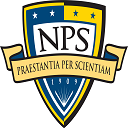
Biography:
Major Pace has completed a Bachelor of Science Degree in Systems Engineering Management from the United States Air Force Academy and a Masters Degree in Aeronautical Science from Embry Riddle Aeronautical University. He is currently enrolled as a student at Naval Postgraduate school (NPS) and has completed a certificate in Nuclear Command and Control Communications (NC3). Maj Pace is currently serving as the Assistant Director of Operations and U-2 Instructor pilot, for the 1st Expeditionary Reconnaissance Squadron
Abstract:
Laser communication has been postulated on since the early 1970s however it has taken until the past 5-10 years to make any significant contribution to lasers or optical communication. This is largely since RF communication became so easily available and inexpensive to employ. The increase in demand for greater throughput and bandwidth for things like: steaming video or hyperspectral imaging requirements, has really pushed laser communication to become a necessity for a variety of applications, but especially so for deep space communication. Laser communication benefits include overcoming shortfalls in bandwidth and throughput, it all but eliminates the limitations associated with specific frequency usage, and it can often be manufactured in a way to save on weight and power requirements for communication system. All that being said there are several issues that optical communication/laser systems must overcome as the technology matures; this includes: pointing stabilization and long-range usage where RF communication might still be the best solution. Regardless it is clear that in order to continue to progress and explore deep space laser communication technologies are required
IAN Kurtz
Air Force Institute of Technology , USA
Title: Russian strategic modernization
Time : 15:00-15:30
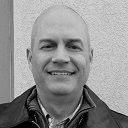
Biography:
Ian Kurtz is a doctorate candidate and instructor for the Air Force Institute of Technology at Kirtland Air Force Base in Albuquerque, New Mexico. Ian retired from the USAF after 22 years of service in 2008. In addition, he holds two Master's degrees and teaches part time for the University of New Haven. Ian is married with two children and enjoys travel, exercising, and spending time with his famil
Abstract:
Russia has, for several years, committed many millions of rubles modernizing their nuclear arsenal. In addition to enhancing the capabilities of their nuclear triad, they have also began thinking outside the box by creating new capabilities.
Jason Lang
Missouri State University, USA
Title: Applying Kahn and Schelling Cold War principles to Cyber
Time : 16:15-17:45

Biography:
Jason is the USSTRATCOM Service Owner for Training, Exercise and Experimentation services and leads the CMD's technology integration laboratory. He has 15 years’ experience working on Government Information Systems and 16 years within the Aviation Maintenance domain. Jason completed a master’s degree from Creighton University in Information Technology Leadership and is currently working towards a Master’s degree on Defense and Strategic Studies with Emphasis in CWMD at Missouri State University Washington, DC area campu
Abstract:
Nuclear deterrence, historically conceptualized through mutual assured destruction, has been the foundation for the delicate balance of power among nations. Advancements in technology in the last two decades since the Cold War, have changed the landscape significantly and has forced a relook into how equilibrium can be achieved. Within this new environment, the question becomes how to achieve ambiguity, through both offensive and defensive non-kinetic means, towards a steady-state of equilibrium. To truly understand the impact of technological advances and a way forward, it is imperative to revisit the original concepts of Kahn and Schelling on nuclear deterrence theory, but through a modern lens.

Biography:
Abstract:
The 9/11 Commission made numerous recommendations to the American people about how to rectify the problems that allowed the terrorist attacks on the US Homeland to occur. Congress implemented reform in the Intelligence Reform and Terrorism Prevention Act of 2004 (IRTPA), however because of the way the law was written and the policies constructed to implement the law, challenges and stovepipes still remain. This paper will look into the following implemented recommendations of the 9/11 Commission: creation of the Director of National Intelligence and changes to information sharing, and whether these changes have made the intelligence enterprise more effective
